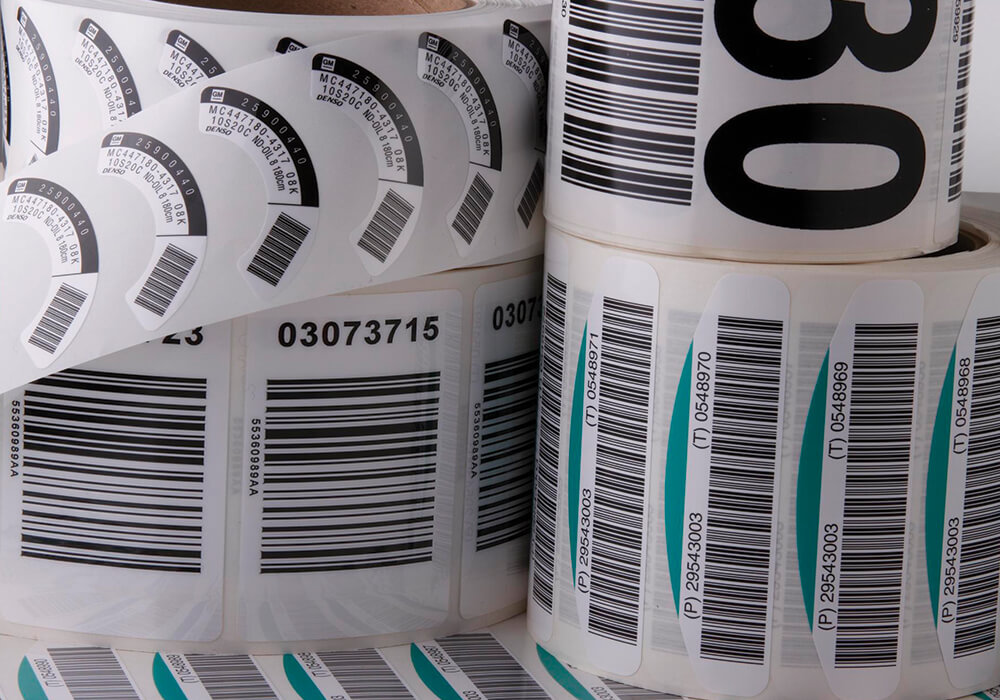Tracking Methods: Barcodes & RFID
There are many ways to track and trace objects to maintain accurate records on pricing, inventory, and other important business information. Among these are barcodes and RFID. Barcodes are cost-effective and widely used, while RFID offers the advantage of scanning multiple items simultaneously without direct line-of-sight, improving efficiency and accuracy in tracking.
What Is An RFID Tag?
Radio Frequency Identification is a form of wireless communication that uses radio waves to identify and trace objects. RFID can tell you what an object is, where it is and even its condition. There are 3 frequencies to RFID (low, high, ultra-high) that play an important role in the functionality of this system. Ultra-high frequency can reach up to 30 feet in the right conditions.
RFID tags come in two types: passive, which have no power source and activate only in the presence of an RFID reader, and active, which contain a battery and can transmit signals autonomously, enhancing their range and reliability in tracking and managing assets across various industries.
Why Use an RFID:
- Uniquely identify an individual item beyond its product type and locate items without direct line-of-sight.
- Scans multiple items at once allowing for quick scanning up to 1,000 per second.
- Barriers may be needed within a warehouse setting to prevent scanning across multiple docks or duplicate scans.
- Automate inventory and asset-tracking.
- Identify the source of products, enabling intelligent recall of defective or dangerous items.
- Deter use of counterfeit products in the supply chain.
- Wirelessly lock, unlock, & configure electronic devices.
Drawbacks of RFID:
- Cost is the greatest obstacle to implementation.
- Each RFID tag runs from $1 to $30 per tag, and in many cases, the readers can cost up to 10x more than conventional barcode scanners.
- RFID label manufacturing requires more in-process controls to avoid problems and defects, which is costly.
- Requires much higher levels of planning and commitment to part commissioning, infrastructure, maintenance, & equipment and is often implemented in stages making execution complex and expensive.
- RFID tags have specific restrictions on the type of materials that they are applied to. For example, Metal may deactivate the antenna and will not transmit.
What Is A Barcode?
Barcodes are a standard method of identifying the manufacturer and product category of a particular item. They are comprised of a series of vertical bars of varying widths, each width representing a different digit, zero through nine. Barcodes can be read by a laser scanner, are commonly found on consumer products, and are usually utilized for inventory control.
Why use a barcode?
- Long-established, easily implemented & understood in production environments.
- Known to be more accurate and reliable than RFID (due to scanning one at a time opposed to risking scanning more than intended with RFID).
- Can be manufactured with conventional converting equipment. RFID labels require specialized manufacturing equipment.
- Typically more durable than RFID labels, which are electrical constructions of more materials each potentially at risk of damage or defects.
- Relatively inexpensive system for managing inventory and gathering information about a product.
Drawbacks to Barcodes:
- One-to-one connectivity: Each item has to be individually scanned.
- Barcodes give product type information but are unable to locate an object at any given time.
Optimizing Your Tracking: The Power of Barcodes and RFID Technology
Both barcodes and RFID technology offer benefits for tracking and managing inventory, assets, and critical business information efficiently. While barcodes include cost-effectiveness and reliability in traditional tracking scenarios, RFID technology pushes the boundaries by enhancing operational efficiency through bulk scanning and the absence of a line-of-sight requirement. Each system has advantages and considerations, making the choice between them dependent on specific business needs, budget constraints, and the desired level of tracking sophistication.
Work with Whitlam For Your Tracking Operations
Whether implementing a robust tracking system for the first time or aiming to upgrade current operations, Whitlam Group stands ready to assist. With our expertise in both barcode and RFID technologies, we navigate the complexities of each system to find the perfect solution for your tracking needs. Contact Whitlam Group today for all your barcode and RFID requirements, and let us help you achieve unparalleled efficiency and accuracy in your tracking operations.
